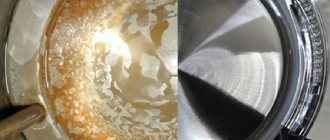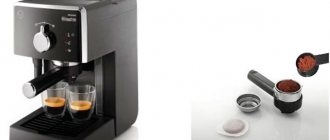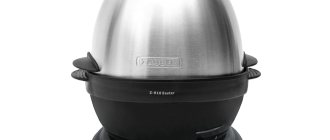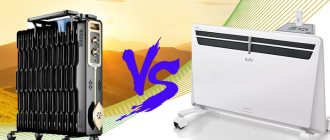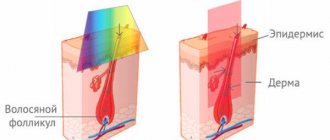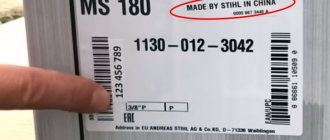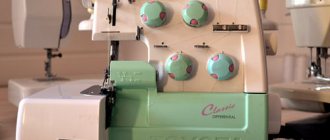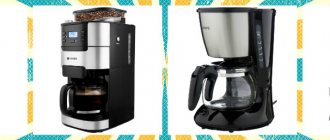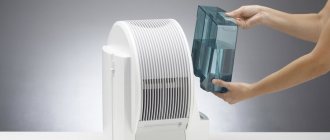What is the difference between a thermopot and an electric kettle?
To understand the main differences, pay attention to the parameters. You need to understand how each device works, what the main design and functional features are.
How the devices work
It would be better to take an electric kettle first for review, since it is the most common and is found in the kitchen of almost every housewife. The electrical appliance is connected to the network with a cord. The container is filled with water through the open lid. After turning on the button, which is usually located on the handle, current flows to the heating element. The heating element heats up to a high temperature and boils the water.
Important! All modern kettles are equipped with a thermostat that turns off the heating element after the water boils.
After turning off the heating element, the temperature of the water inside the kettle is not maintained by anything. The heating element does not turn on again. The water begins to gradually cool down. The cooling rate depends on the ambient temperature. Since the walls of the kettle are thin, after about 30 minutes the boiling water will turn into hot water.
After the water boils, the heating element turns off automatically and does not turn it on again.
The main difference between a thermopot and an electric kettle in terms of operation is that the household appliance performs two functions. A person receives a kettle and a thermos at the same time. Water is heated in the same way from a working heating element, but this takes longer, since a thermopot has a larger reservoir volume compared to a kettle. However, cooling also takes longer. In 2-3 hours the temperature drops by 20-30 °C. You can brew tea with hot water at 80-70 oC.
Depending on the volume of the tank, boiling water lasts 15-30 minutes. There are models with an additional heating element. In a thermopot, it maintains the heating of the liquid to a predetermined temperature. Water is supplied by a pump, which can be manual or automatic.
The thermopot heats water and maintains its temperature using the principle of a thermos
Design Features
Externally, the thermopot versus the kettle differs in size. A household appliance is considered stationary. The reservoir holds up to 8 liters of water.
The kettle is a mobile household appliance. It is equipped with a small tank with a capacity of 0.5 to 3 liters. The most popular teapots have a volume of 1.5-2 liters.
Important! There are many more varieties of kettles than thermopots. They are made from plastic, stainless steel, glass, and ceramics. They give it an interesting shape and are equipped with viewing windows and lighting.
Other features include the following:
- The kettle has one water tank, and some thermopot models have two. In the second container, the heating of the liquid is regulated. You can draw water at the desired temperature from the device.
The second tank maintains the set water temperature - The kettle only needs electricity until the water boils. Then you can remove it from the socket. If the thermopot is equipped with an additional heating element and an automatic pump, a constant connection to the outlet is required to maintain the temperature of the liquid. However, there are models with a manual pump and without an additional heater. They do not require a permanent connection to an outlet. The water temperature is maintained by the heat-resistant thick walls of the tank. In other words, they reduce the rate at which it cools.
- Usually all thermopots have a water filter. When it gets dirty, it is changed. For a kettle, the filter can only be a mesh mounted on the spout. It traps scale when pouring water into a cup.
Regardless of the material used, the body of the kettle is thin. It warms up along with the water. Touching may cause burns. The big advantage of a thermopot over a kettle is its thick, heat-resistant walls. Even when the liquid is boiling, they do not become hot. The possibility of injury from touching with a naked body is excluded.
Functional Features
The third important feature is the difference in functions. For a kettle, depending on the model, they are as follows:
- timer;
- protection against accidental activation by children or in the absence of water;
- automatic shutdown, for which the thermostat is responsible.
Advanced models are equipped with a clock. There is an alarm function and remote control from a smartphone. Budget electrical appliances have only a thermostat and a start button with an indicator light.
The modes of some devices can be displayed on an electronic display
If you look at ease of use, which is more profitable than a thermopot or an electric kettle, then the first electrical appliance has more functions. Even the budget model is equipped with a thermostat with 3-4 modes. Traditionally, there is a lock against accidental activation by children and without water. Depending on the model, there is a heating function, single serving dosage, and operating mode indicators. Rollover protection is considered useful. The automation locks the lid, preventing boiling water from spilling out of the tank.
Kettle vs thermopot: which is better
The electric kettle has been known to people for a long time, but the thermopot is a fairly new invention. This is a useful, sometimes irreplaceable device for home and office. It is needed if there is a need to constantly have hot water on hand for preparing drinks, food or some other functions. This electrical appliance is a modern analogue of an electric kettle; it allows you to save energy and time in the fast pace of life. But the pros and cons of each of these devices are not known to everyone. Therefore, many simply do not know whether to buy a thermopot or a kettle. What is better and more practical for everyday use, they tell Dni.ru.
Pros and cons of the kettle
The main advantage of a kettle like STARWIND SKG2214 is its small volume. This means that the water in it will heat up faster. However, this advantage immediately turns into a significant disadvantage. For a large company there may not be enough water. It takes too long to reheat it.
At the same time, the kettle will not take up much space in the kitchen. It can be installed even in the most secluded corner.
Manufacturers produce electric kettles in various colors and shapes. This allows you to choose the ideal option for each occasion.
The disadvantages include high energy consumption, as well as the possibility of scalding with boiling water. The last point is especially relevant when using the kettle by children.
Another disadvantage is that such a device boils water, and not everyone likes to drink drinks that are too hot. Therefore, they either have to wait until they cool down, or dilute them with cold water. And using an electric kettle in the workplace is not always possible or profitable. Of course, you can come up with something to be able to drink a hot drink here too, for example a thermos kettle.
Distinctive features of the thermopot
The water in a thermopot like Sinbo SK-2395 does not cool down, and the volume of liquid is enough even for a large company. But it is more expensive than a kettle. On average, the price of this device ranges from 2000 rubles. It is quite obvious that buying an electric kettle is much cheaper.
When constantly connected to the network, it consumes almost twice as much energy as an electric kettle. At the same time, it is possible to independently regulate the heating temperature.
It is much safer for children to use a thermopot than a kettle. You can purchase a device with a volume of three to ten liters. And besides, they go on sale in various colors and shapes, which allows each buyer to choose exactly the one he likes.
Economical option
It is necessary to immediately say that electricity consumption directly depends on how many times a day a particular device will be used and where. If we talk about household use of an electric kettle a maximum of five times a day, then purchasing a thermopot in this case is absolutely unprofitable. In this case, bills can be two or even three times higher.
But if the number of people using hot water is more than ten, and they use it several times a day, then, of course, you cannot do without a thermopot. And purchasing any other similar device in such a situation would simply be impractical.
Comparison table of devices
| Characteristics | Thermopot | Electric kettle |
| Functions | boils water and maintains the set temperature | boils water |
| A heating element | spiral or disk | spiral or disk |
| Volume | 3-10 liters | 0.5-3 liters (1.7 l average) |
| Power | no more than 800 W | 700 W– 3 kW |
| Price | 1000-20,000 rubles | 550-8000 rubles |
| Boiling time | 13 minutes or more | 6 minutes |
Let's sum it up
When choosing which electrical appliance to prefer, answer several questions: how much hot water do you need, what temperature, how often and under what conditions will you use it. A thermopot is necessary if you have a large family or a small child. You often drink tea, mix baby formula or cereal several times a day. This is a convenient device for an office with a large team. But a thermopot is not economical if only you use it and only a couple of times a day. It is also not relevant for a small family. In this case, it is more profitable to purchase a regular electric kettle.
The main advantages of a thermopot:
- Availability of a large number of functions.
- Safety.
- Ease of use.
- Economical.
The thermopot will be useful not only for tea lovers and families with babies. Its body is made of thermosite, which means that you don’t have to worry about the safety of children and the elderly. To pour water into a cup, just press one button. The built-in thermostat will protect against overheating.
The main advantages of an electric kettle:
- Compactness.
- Save time.
- A wide range of.
- Possibility of choosing a heating element.
The case heats up, which is unsafe for children and the elderly. In addition, there is always a chance of getting burned from water spilled on yourself. In this regard, the electric kettle loses to its competitor. But this is the best option for those who are always in a hurry. Sometimes it is even used as decoration. If we take into account the miniature size of the device and the design, then in this regard the kettle wins.
READ "DAYS.RU" IN "ZEN" - ONLY IMPORTANT NEWS
Which is better - a thermopot or a kettle?
Continuing to compare household appliances, you can consider their pros and cons. They are not the main factor in identifying differences, but help the consumer more accurately determine the choice of the appropriate device.
Arguments in favor of the kettle:
- fast water heating;
- compact size, light weight;
- mobility;
- a wide range of models of different designs;
- affordable price for all categories of the population.
Compactness, mobility and fast heating are considered the main advantages of an electrical appliance.
The disadvantage is the inability to heat a large volume of water at one time. Most cheap models have a short service life and a plastic body. When heated, it emits a toxic odor. Fast heating is not only a plus, but also a minus. A lot of electricity is consumed, and the old wiring cannot withstand the heavy load.
Arguments in favor of thermopot:
- maintains the set water temperature or slows down the cooling process due to heat-resistant walls;
- large tank up to 8 l;
- slow heating does not require high voltage, thereby reducing the load on electrical wiring;
- availability of convenient functions;
- To draw water, you do not need to turn the entire device over, but simply bring the cup to the spout.
The cost of even a budget thermal sweater will seem high for many buyers.
The disadvantage is the large size. It is impossible to heat water quickly.
What is a thermopot and how is it different?
The appearance of an electric kettle is familiar and familiar to everyone: it is a small container that closes tightly with a lid and is equipped with a handle for carrying. After pressing the button, heating of the liquid begins. There is also a spout at the top to make it convenient to pour water into a glass or cup. To make the main part, plastic, ceramics, stainless steel or glass can be used.
The thermopot is large in size. The body is made of metal or plastic, which is complemented inside by a fairly heavy steel or glass bulb, as well as a heating element. Based on this, it is not wise to make a device that will have to be lifted and tilted in order to pour water.
For this purpose, a spout is made, only directed downwards: just place a container under it and press a button so that the built-in pump releases the required amount of water. There are several ways to serve boiling water:
- Mains powered pump.
- A manual button that allows you to draw liquid even if the device is not connected to the network.
- The feed can also come from pressing the cup on a special valve.
Some models include three methods at once, so that everyone chooses a method that is convenient for themselves, which will help save time or pour water when there is no electricity. The heating element in both cases is presented either in the form of a hidden spiral or a heating disk. The former are cheaper than disk ones, as they are less convenient and not as reliable. Also, both products are equipped with a transparent area with a measuring scale so that you do not have to measure the water by eye. Both the kettle and the thermopot are equipped with a stand on which they can rotate around their own axis.
Which is more economical: a thermopot or an electric kettle?
To understand the efficiency of devices, you need to find out which of them consumes little electricity. The thermopot wins here. In terms of instantaneous energy consumption, the device is more economical, since it is equipped with a less powerful heating element. He heats the water slowly at a time, and then only maintains its temperature.
Due to the low-power heater, the device consumes less electricity
Heating consumes up to 30 W/hour of electricity. In 10 hours the figure will be 300 W. To this value is added the flow rate spent on the initial heating of the liquid. For most household models, the figure is 200 W. In total, in 10 hours the consumption will be 500 W. It turns out that the electricity consumption of a thermopot compared to a kettle is negligible if both devices are constantly used for the specified time. When there is no heating function at all, the consumption is calculated using only one primary heating, that is, 200W.
Important! There are models with a heater with a power of up to 1.6 kW, which cannot be called economical.
Electricity consumption
For calculations we will use a thermopot with an average power of 800 watts and a volume of 4-5 liters. Let's calculate how much electricity will be consumed per day - 800 watts divided by 60 minutes - we get 13 watts per minute. The average heating time is 15 minutes - during this time 195 watts will be consumed. To maintain the temperature, 30 watts are needed - based on these calculations, we find that 450 watts will be spent per hour. About 650 watts will be spent per day, and 19,500 watts or 19.5 kilowatts per month.
We recommend: How much electricity does the charger consume?
The cost is not that high, the average cost of electricity in the country is 4 rubles, which means that for a month of maintaining a thermopot you will spend about 78 rubles.
What consumes more electricity: a kettle or a thermopot?
The leader in instantly consuming large amounts of electricity is the kettle. All models are equipped with a powerful heating element. The parameter usually varies from 1.7 to 2 kW. However, small amounts of liquid heat up quickly. Further temperature maintenance is not provided. Since the device initially consumes more electricity, but the water heats up faster, the approximate consumption for one boiling of 1.5 liters of liquid will be 140 W.
When turned on, the device consumes a lot of electricity once due to the powerful heater
The total consumption for the same 10 hours depends on the number of boils. On average, a family of four needs to heat water up to 6 times a day. If you take an electrical appliance with a 1.5 liter tank and a power of 1.7 kW, then the consumption will be 800 W.
Kettle and thermopot: functions, purpose
The right choice is based on where the device will be used, how often hot water is needed and in what volume. As already mentioned, you can boil water with any of the devices, and then their purpose has significant differences. What is the difference?
Electric kettle
With its help, you can boil water in literally 3-4 minutes; after boiling, it automatically turns off. Then the water just cools down. Depending on the material of the kettle body (plastic, metal, ceramic), it may cool faster or slower.
Any electric kettle is a compact device that can be moved from the kitchen to the room, the main thing is to plug it into an outlet. The standard volume is 1.5-1.7 liters, but you can find models with a water volume of 0.5 to 3 liters.
Manufacturers today produce modern models of such kettles, which provide additional capabilities other than boiling. For example, heating water to a certain temperature, on timer, electronic control or the ability to remotely control using a smartphone. But that's all there is to it.
Thermopot
This is a stationary device. Thermopot has a larger volume of water, from 2.5 to 6 liters. The thermopot combines the functions of a kettle and a thermos - it boils water and maintains its temperature for 12-15 hours. Of course, after 3-4 hours the water will cool down to 80-90 C, but for brewing tea or coffee this is the most necessary temperature. Some models have an additional electric heater that heats the water to the desired temperature.
In a thermopot, water takes longer to boil than in an electric kettle; the process takes from 15 to 30 minutes, depending on the volume. Hot water is supplied using a pump, manual or automatic. Good reviews were left by those who purchased a thermopot for an office or a large family, in which case its use is much more economical and convenient. There is no need to constantly add water and turn on the device every time, thereby reducing energy consumption.
